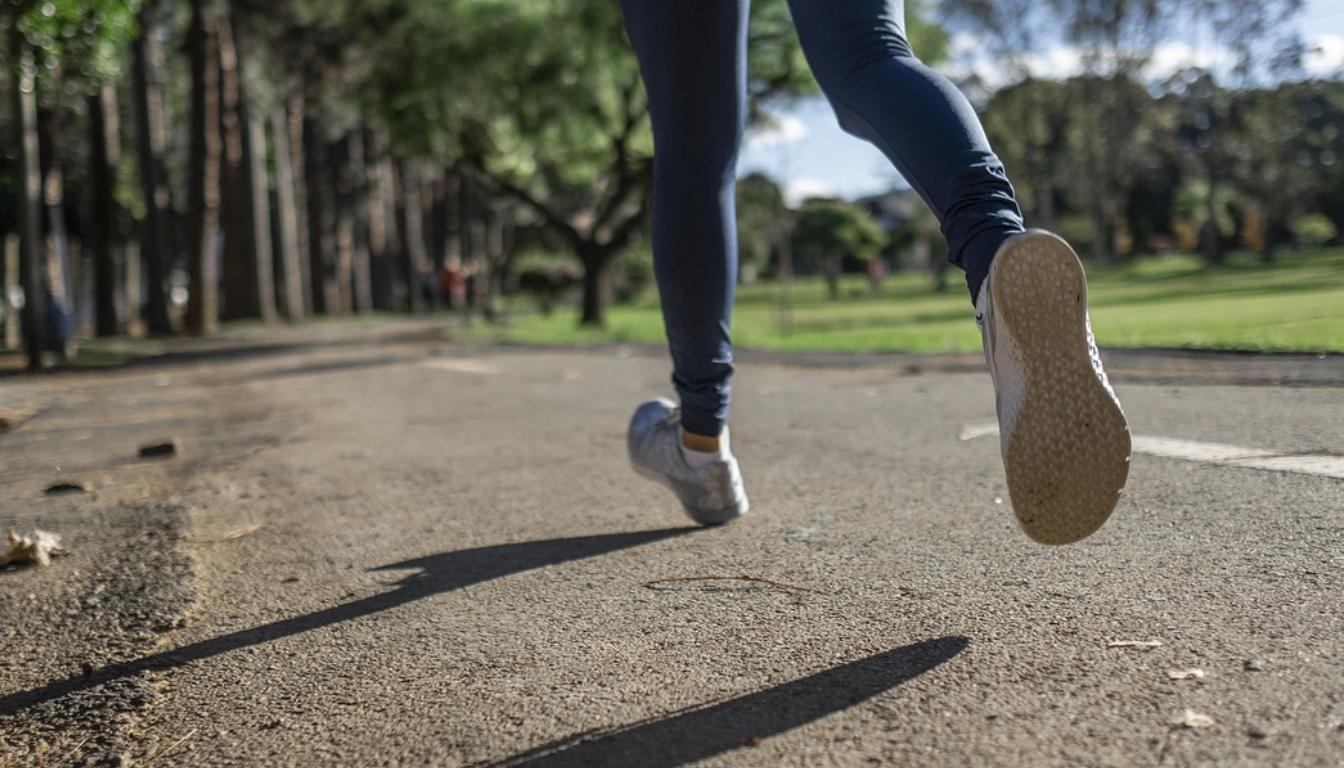
OPTIMAL TREATMENT OF PATELLAR DISLOCATIONS
Patellar dislocation is one of the most common knee joint injuries, especially in young and athletically active people. Targeted diagnostics and individually tailored therapy are crucial for successful treatment and to avoid consequential damage.
- 1. What is a patellar dislocation?
- 2. How does a patellar dislocation occur?
- 3. What complaints does a patellar dislocation cause?
- 4. How is a patellar dislocation diagnosed?
- 5. What is the optimal therapy for patellar dislocation?
- 6. How is surgery performed for patellar dislocation?
- 7. Frequently asked questions about patellar dislocation
- 8. Post-treatment regimens for patellar dislocations
What is a patellar dislocation?
A patellar dislocation describes the complete or partial displacement of the kneecap (patella) from its anatomically intended guide groove on the femur, the so-called trochlea femoris. As a rule, the patella shifts outwards (lateral dislocation), which is associated with an acute restriction of movement, pain and, if necessary, a visible malalignment of the knee.
The physiological interaction between the thigh muscles, ligaments and bony guidance normally ensures that the patella remains stable in its position when the knee is flexed and extended. However, if there is a disturbance of this balance – for example due to mechanical influences, structural anomalies or muscular imbalances – the kneecap can jump out of the sliding bearing.
In clinical practice, a distinction is made between a first-time (primary), a habitual (recurring without clear trauma) and a recurrent (repeated after previous dislocation) patellar dislocation. The disease disproportionately affects athletically active adolescents and young adults, especially female individuals, as they are more likely to have certain anatomical risk factors such as an increased Q-angle expression.
Thus, patellar dislocation is one of the most common pathological causes of instability in the anterior knee joint area and can lead to long-term cartilage damage and osteoarthritis if not treated adequately.


2. How does a patellar dislocation occur?
The development of a patellar dislocation is multifactorial and can be favored by traumatic events as well as congenital or acquired anatomical predispositions. Acute dislocations typically occur during sports activities involving abrupt changes of direction, rapid pivoting movements on a loaded leg, or direct impacts to the inside of the knee. The acting force vector pushes the patella outwards from the trochlea.
In addition to these external influences, however, structural risk factors play a decisive role: These include trochlear dysplasia (shallow or malformed sliding groove), patella alta (kneecap standing too high), lateralized tibial tuberosity (laterally displaced attachment of the patellar tendon) and an increased Q-angle. Insufficiency of the medial patellofemoral holding structures – especially the medial patellofemoral ligament (MPFL) – can also promote the development.
In patients with generalized connective tissue weakness or muscular imbalance, even a minor force can be sufficient to trigger a dislocation. In many cases, a single dislocation leads to structural changes (e.g. tears of the MPFL or cartilage damage) that significantly increase the risk of further dislocations. Therefore, the exact analysis of the underlying causes is essential to enable adequate therapy and avoid future dislocations.
3. What complaints does a patellar dislocation cause?
Patients with a patellar dislocation typically report sudden, shooting pains in the area of the anterior knee, often accompanied by an immediate dysfunction of the affected leg. In many cases, there is a pronounced swelling of the knee joint immediately after the luxating event, caused by hemarthrosis (bleeding into the joint) or irritation of the joint capsule.
Those affected also describe a marked feeling of instability, as if the knee were “slipping away” or “giving way”, which, especially in the case of repeated dislocations, can lead to a considerable restriction of freedom of movement in everyday life or during sports. Also characteristic is the subjective feeling of a mechanical event – such as a “snapping”, “cracking” or “grinding” – at the time of dislocation. As a rule, the incident is so clearly perceptible that most patients immediately feel that the kneecap has slipped out of its normal position. They often describe this with formulations such as “dislocated” or “popped out”.
In some cases, the kneecap repositions itself spontaneously by relaxing the muscles or by certain leg movements, which can lead to a short-term improvement of the symptoms. Nevertheless, a clear mistrust of one’s own knee often remains, accompanied by muscular guarding and psychological stress, especially in athletically active people. In chronic instability, recurrent dislocations can also occur, in which the pain intensity is sometimes lower, but the feeling of insecurity remains strongly pronounced.
4. How is a patellar dislocation diagnosed?t?
The diagnosis of a patellar dislocation is based on a multi-stage procedure that combines anamnesic, clinical and imaging methods. At the beginning there is a careful anamnesis, in which the exact description of the accident, the symptoms as well as any pre-existing complaints or previous dislocations are recorded.
Clinically, a physical examination is then carried out, in which typical signs such as a displacement of the patella, pressure pain over the medial holding apparatus or a positive apprehension test (fear reaction with passive displacement of the kneecap outwards) can give indications of a dislocation. Hematomas or joint effusions are common accompanying findings. In addition, imaging diagnostics are used to assess the severity of the dislocation as well as possible accompanying injuries – such as cartilage damage, fractures or ligament ruptures.
X-rays in several planes primarily serve to rule out bony injuries and to assess anatomical features such as patella alta or lateral malalignment. Magnetic resonance imaging (MRI) enables a detailed representation of soft tissue structures, in particular the medial patellofemoral ligament (MPFL), which is often injured in a dislocation. Crucial for further therapy planning is also the identification of predisposing risk factors.
These include trochlear dysplasia (malformation of the sliding bearing), a valgus leg axis (X-leg position), a patella alta (high position of the kneecap), an increased torsion of the thigh or lower leg axis as well as a generalized hypermobility – as it occurs, for example, in Ehlers-Danlos syndrome. Muscular insufficiencies, especially of the M. vastus medialis, can also play a decisive role. The exact diagnostic clarification of these factors is essential to avoid recurrences and to initiate an individually adapted therapy.
5. What is the optimal therapy for patellar dislocation?
The choice of the optimal therapy for a patellar dislocation depends on the extent of the injury, the presence of anatomical risk factors and the individual stress situation of the affected person. A distinction is made in principle between conservative and operative therapy, whereby both approaches aim to restore stable patellofemoral guidance and avoid recurrences. In the case of a first-time, uncomplicated dislocation without significant accompanying injuries or structural risk factors, conservative treatment is indicated in many cases.
This includes an initial immobilization of the knee joint with the help of a splint (orthosis) for about two to three weeks, followed by a targeted physiotherapeutic rehabilitation. The focus is on strengthening the M. vastus medialis obliquus (VMO), improving muscular coordination and restoring full mobility. Pain medication and, if necessary, anti-inflammatory measures (e.g. cryotherapy) complement the conservative regimen.
In contrast, operative therapy is often indicated in patients with high-grade trochlear dysplasia, patella alta, medial ligament rupture (e.g. MPFL tear), osteochondral fractures or recurrent dislocations. A persistent subjective instability despite conservative measures can also be an indication for surgical intervention.
The decision for or against a surgical intervention should always be based on a differentiated risk-benefit assessment, taking into account the clinical findings, imaging diagnostics and individual factors such as age, sporting activity and rehabilitation potential. The goal of any therapy – conservative as well as operative – is a permanent stability of the patella, the restoration of joint function as well as the prevention of later consequential damage such as cartilage abrasion or osteoarthritis development.
6. How is surgery performed for patellar dislocation?
The operative treatment of a patellar dislocation is carried out according to an individual therapy plan, which is oriented to the respective existing anatomical risk factors and the extent of the pathological changes. As a rule, a diagnostic arthroscopy is performed first to assess the extent of the intraarticular damage. Both the cartilage surface of the patella and the trochlea as well as adjacent structures such as menisci, cruciate ligaments and synovia can be examined in detail. In many cases, a therapeutic measure is carried out at the same time – e.g. the removal of free joint bodies, the smoothing of cartilage defects or the reconstruction of torn ligament structures.
A central component of operative therapy is often the so-called MPFL plasty (medial patellofemoral ligament), in which the central holding ligament of the patella is reconstructed. For this purpose, a part of the semitendinosus or gracilis tendon is usually used as a transplant, which is fixed between the medial femur and patella to ensure stable guidance of the kneecap. In case of pronounced trochlear dysplasia, a trochleoplasty may additionally be necessary, in which the sliding groove of the femur is surgically deepened. Likewise, in case of a patella alta or a lateralized attachment of the patellar tendon, a realignment osteotomy on the tibial tuberosity (e.g. according to Fulkerson or Elmslie-Trillat) may be necessary to improve the biomechanical guidance. In rare cases, additional interventions to correct torsional malalignments or leg axis deviations are indicated.
The choice of the surgical method always depends on the interaction of several factors and requires precise preoperative planning with the help of imaging methods (MRI, CT) as well as, if necessary, 3D-supported analyses. Postoperatively, a structured rehabilitation over several months is crucial for the success of the therapy. It includes a gradual mobilization, muscle building, coordination training and the return to sporting activities – always under the control of defined load limits. The long-term goal of operative therapy is to restore the biomechanical stability of the knee joint, prevent renewed dislocation and sustainably improve the quality of life of those affected.
7. Frequently asked questions about patellar dislocation
How long does healing take?
The healing time varies, usually taking several weeks to months, depending on the severity of the injury and the chosen therapy.
Can I play sports again after a patellar dislocation?
Yes, after appropriate rehabilitation and consultation with your doctor, it is often possible to resume sports activities.
8. Post-treatment regimens for patellar dislocations
How long does it take to heal after a patellar luxation?
The healing time depends on the severity of the injury and the chosen form of treatment. In the case of an uncomplicated dislocation treated conservatively, the patient can return to everyday life after 4 to 6 weeks, and is usually able to resume sporting activities after around 3 to 6 months. After surgery, rehabilitation can take up to 6 to 12 months.
When can I resume sports activities after patellar luxation?
This depends on the type of therapy, your individual constitution, and your level of fitness. Light sporting activities such as cycling or swimming are often possible after 8–12 weeks. For contact sports or sports involving rapid changes of direction (e.g., soccer, handball), a full rehabilitation period of 6 to 9 months should be planned.
Is surgery always necessary?
No. Surgery is usually only necessary if there are risk factors such as trochlear dysplasia or repeated dislocations. A first dislocation without accompanying injury can often be treated conservatively. An individual assessment and risk analysis are crucial.
Does health insurance cover the costs of treatment?
As a rule, yes. Both conservative and surgical treatment of patellar luxation are covered by statutory health insurance if they are medically indicated. Physiotherapy follow-up treatment is also usually reimbursed on a pro rata basis – a doctor’s prescription is required for this.
Aftercare schemes
PDF Post-treatment Patellar dislocations
